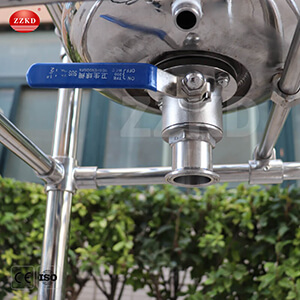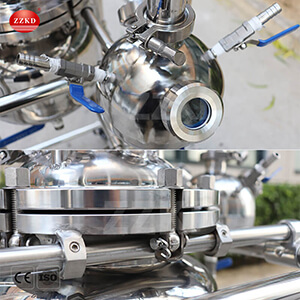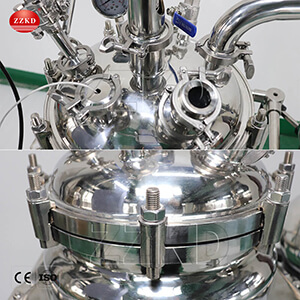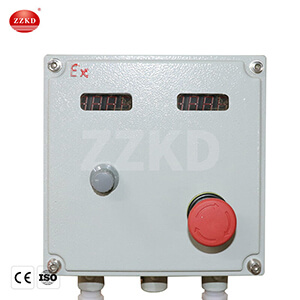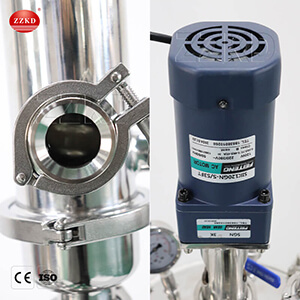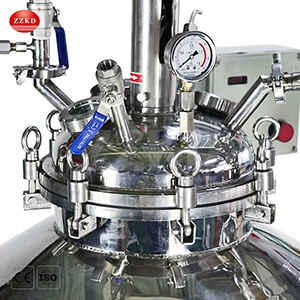How Much Does a Stainless Steel Reactor Cost?
Are you finding it hard to plan your budget for your next big project? Stainless steel reactor prices can seem complicated. They change a lot. You need clear information to choose wisely.
The price of a stainless steel reactor changes based on its size, the type of stainless steel used, its ability to handle pressure and heat, and any special features you need. Prices usually range from a few thousand to tens of thousands of dollars. We offer good prices directly from our factory.

As a company that makes and sells these reactors, we want to help you understand what affects the price. We have been making lab instruments for many years. We know that buying a Stainless Steel Chemical Reactor is a big decision. We want to make it easier for you. Let's look at the details so you can feel sure about your choice.
What Key Factors Determine the Price of a Stainless Steel Reactor?
Do you wonder why the prices for reactors are so different? Sometimes there are hidden costs. The details can be hard to understand. You need to know what really makes the price go up or down.
The main things that set the price are the reactor's size, the kind of stainless steel (like 304 or 316L), how much pressure and heat it can take, the motor's strength, and extra parts like distillation columns or condensers.

When we calculate the price for a stainless steel reactor, we look at several important parts. Each part adds to the final cost. Understanding these helps you see where your money goes.
Understanding Reactor Volume and its Price Impact
The bigger the reactor, the more material we need to build it. This is a basic rule. A 100-liter reactor will use more stainless steel than a 50-liter one. More material means higher costs. Also, a larger vessel needs a stronger support structure. The work to build it also takes more time and skill. So, volume is a big factor in the price.
Material Grades (304 vs. 316L) and Cost Differences
We usually use stainless steel grades 304 or 316L. Grade 316L costs more. It has an element called molybdenum. This makes it better at resisting rust and chemicals. If your work involves harsh chemicals, 316L is a good choice, even if it costs more upfront. For less demanding uses, 304 is often fine and saves money.
The Role of Design Complexity
If a reactor needs to handle high pressure or high temperatures, the design must be stronger. This means thicker walls and special seals. The way it's mixed inside, using an agitator, also matters. A more powerful motor or a special agitator design will add to the cost. We design these carefully to make sure they are safe and work well for your needs.
Added Features and Their Price Implications
Many customers need extra parts. For example, you might need a heating or cooling jacket around the reactor. Or extra openings, called ports, for sensors or adding materials. Sight glasses let you see inside. All these features make the reactor more useful for specific tasks but also add to the cost. We always discuss these options with you to find the best fit.
| Factor | General Impact on Price | Brief Explanation |
|---|---|---|
| Reactor Volume (Size) | High | More materials, more labor for larger sizes. |
| Material Grade (e.g., 316L vs 304) | Medium-High | 316L offers better corrosion resistance but costs more. |
| Pressure/Temperature Rating | High | Requires thicker walls, stronger design, special seals. |
| Custom Features (ports, agitator type) | Medium | Additional design, materials, and fabrication time. |
| Motor Power & Agitator Type | Medium | Higher torque or specialized mixing needs stronger, costlier components. |
How Does Reactor Size Directly Affect the Price?
Is a bigger reactor always much more expensive? You are trying to find a balance. You need enough capacity but also need to watch your budget. It can be hard to guess how much more a larger size will cost.
Yes, the size of the reactor is a very big factor in its cost. Bigger reactors need more raw materials. They also need to be built stronger. Often, they need more powerful motors. This all leads to a higher price.
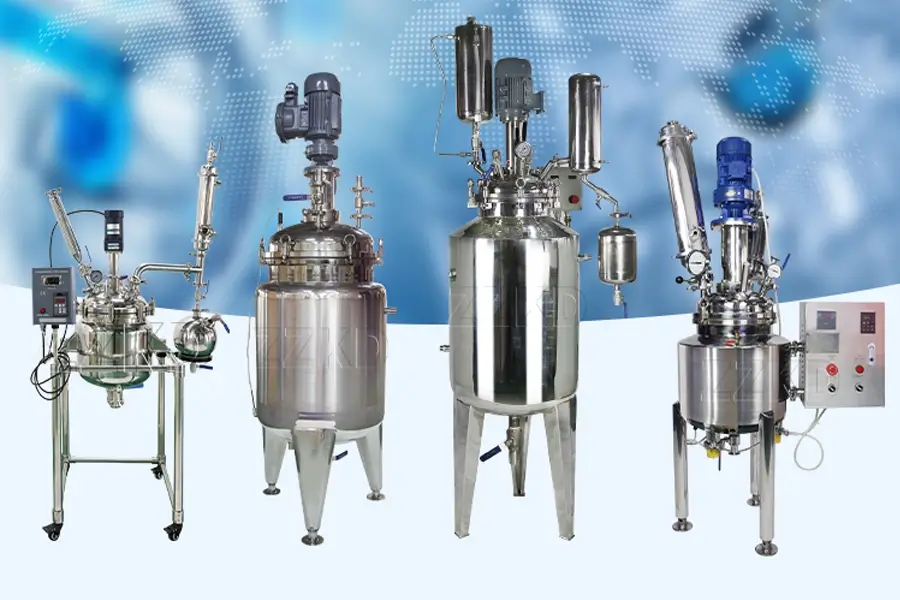
Let's look more closely at why size matters so much for the price. It's not just about using more steel.
Material Consumption for Different Sizes
This is the most obvious part. A 200-liter reactor tank will need roughly twice the amount of stainless steel sheet for its main body compared to a 100-liter reactor, assuming similar designs. Since stainless steel is a major part of the cost, this directly increases the price. The top and bottom dishes, flanges, and nozzles also scale up.
Engineering and Labor Costs for Larger Vessels
Building a larger reactor is more complex. Welding thicker materials takes more time and skill. Handling larger, heavier pieces requires special equipment in our factory. The design work also becomes more critical to ensure structural integrity and safety, especially if it's a pressure vessel. Our skilled workers spend more hours on bigger units. I remember when we built our first 1000L reactor; the logistics in the workshop itself were a challenge we had to carefully plan for, very different from our standard 50L or 100L models.
Scaling of Peripheral Components
It's not just the tank. The agitator shaft needs to be longer and stronger for a bigger tank. The motor that drives the agitator needs to be more powerful to mix a larger volume, especially if the material is thick. If there's a heating or cooling jacket, it needs a larger surface area and possibly a more powerful temperature control unit to work well. All these supporting parts also become more expensive as the reactor size increases. So, the cost tends to rise more than just linearly with volume.
What is the Impact of Material Grade (e.g., 304 vs. 316L) on Stainless Steel Reactor Cost?
Are you unsure about which type of stainless steel you need? Picking the wrong one could cost you more later or even be unsafe. You want good value but also need to ensure quality for your work.
Stainless steel 316L usually costs more than 304. This is because 316L has more molybdenum, which helps it resist rust and chemicals better. Which one you choose depends on the chemicals you will use in your reactor.

Choosing the right material is very important. It affects both the reactor's life and its safety. We offer different grades to match your needs.
Why 316L Costs More: A Look at Alloying Elements
The main difference between 304 and 316L stainless steel is the addition of molybdenum (usually 2-3%) in 316L. Molybdenum significantly improves resistance to corrosion, especially from chlorides and other industrial solvents. Nickel content is also often slightly higher in 316L. These alloying elements are valuable, so their addition increases the raw material cost of 316L steel compared to 304.
When is 304 Stainless Steel Sufficient?
For many general-purpose applications, 304 stainless steel is perfectly adequate and more economical. If your process involves materials that are not highly corrosive, such as some food products, mild solvents, or water-based solutions, 304SS can be a cost-effective choice. We always ask our customers about their intended applications. Many research labs doing basic organic synthesis with common solvents find 304SS suitable for their needs.
Applications Demanding 316L or Higher Grades
316L is the preferred choice when dealing with more aggressive chemicals. This includes pharmaceutical production, saltwater environments, and processes involving acids or chlorides. The "L" in 316L means it has low carbon content, which makes it better for welding and reduces the risk of corrosion at the welds. For critical applications, like in the pharmaceutical or biotech industries we serve, 316L is often the standard. We also offer other alloys for extremely corrosive environments, but 316L covers a wide range of demanding uses.
| Feature | SS304 | SS316L |
|---|---|---|
| Corrosion Resistance | Good | Excellent, especially against chlorides |
| Molybdenum Content | No | Yes (typically 2-3%) |
| Typical Applications | Food processing (less acidic), general labware, mild chemicals | Pharmaceuticals, biotech, chemical processing, marine applications |
| Relative Cost | Lower | Higher |
I recall a client working with botanical extractions. Initially, they considered 304SS to save costs. But after discussing their specific solvent mixtures, which had some acidic components, we recommended 316L. They appreciated this advice, as it prevented potential issues later on. This is part of our commitment to helping customers choose wisely.
Do Customization and Special Features Significantly Add to the Reactor's Price?
Do you need a reactor that is made just for your special process? Standard models might not work for you. You might worry about how much these changes will increase the cost.
Yes, making a reactor unique with things like extra openings, special mixer designs, internal baffles, or built-in sensor systems will make it cost more. This is because these changes need more design work, more materials, and more labor.

Many of our customers need reactors that are not 'off-the-shelf'. We are a factory, so we can make these special changes.
Common Customizations and Their Cost Implications
Some common requests include:
Additional Nozzles/Ports: You might need more openings for adding materials, inserting sensors (like temperature probes or pH meters), or for vacuum connections. Each extra port needs careful placement, welding, and uses more material.
Specialized Agitator Types: The standard agitator might not be best for your material. You might need an anchor type for thick liquids, a turbine for good mixing, or a propeller for gentle stirring. Different designs require different materials and manufacturing methods.
Internal Coils or Baffles: Internal coils can be used for faster heating or cooling. Baffles help to improve mixing by preventing a vortex. These internal parts add to the complexity and welding work.
Automation and Control Systems: Some customers need systems to automatically control temperature, stirring speed, or pressure. This involves adding sensors, control panels, and programming, which increases the price.
Polishing Standards: For food or pharmaceutical use, the inside of the reactor often needs to be polished to a very smooth, mirror-like finish. This takes extra time and skill.
Balancing Custom Needs with Budget
We understand that you have a budget. When you ask for customizations, we talk with you about what is really needed. Sometimes, there are simpler or less expensive ways to achieve your goals. Our engineers have a lot of experience. For example, a customer once asked for a very complex agitator. After understanding their process, we suggested a slightly simpler design that still worked perfectly but saved them some money. We aim to provide the best value. Because we are an integrated factory, we can often make these customizations more affordably than companies that just resell standard equipment.
How Do Pressure and Temperature Ratings Influence the Final Cost?
Are you working with high pressures or very hot or cold temperatures? You probably know this means you need a stronger reactor. But how much does this really make the price go up?
Reactors that can handle higher pressures and temperatures cost a lot more. They need thicker walls. They also need special ways to seal them so nothing leaks. Often, they need more expensive materials or ways of building them to keep them safe and working well.
Safety is our number one concern when building reactors, especially those for high pressure or temperature. These design needs directly impact cost.
Engineering for Safety: Thicker Walls and Reinforcements
To contain high pressure safely, the reactor walls must be much thicker. The amount of extra thickness depends on the pressure rating and the reactor's diameter. Thicker steel means more material cost. It also means more difficult and time-consuming welding and fabrication. The top flange and clamps also need to be much more robust to handle the forces involved. We use special calculation software to ensure the design meets international safety standards.
Material Selection for Extreme Conditions
Standard stainless steel (like 304 or 316L) has limits for temperature. For very high temperatures, we might need to use special alloys that can keep their strength when hot. These alloys are more expensive than standard stainless steel. For very low temperatures, we also need to ensure the material doesn't become brittle.
Specialized Seals and Gaskets
Keeping a reactor sealed at high pressure and/or temperature is critical. The gaskets used must be able to withstand these conditions without leaking or degrading. This often means using materials like PTFE, graphite, or specialized metallic seals, which can be more costly than standard rubber or silicone gaskets used in low-pressure applications.
Testing and Certification Costs for High-Rating Reactors
Reactors designed for high pressure must undergo rigorous testing. This includes pressure tests (hydrostatic tests) to ensure they are safe. Sometimes, third-party inspection and certification are required, especially for larger or very high-pressure vessels. These testing and certification processes add to the final cost but are essential for safety and compliance. For example, a reactor we built for a chemical research company needed to operate at 100 bar. The design, material selection, and testing were very thorough, which was reflected in the price, but it ensured the safety of their researchers.
Why Consider a Chinese Manufacturer Like Us for Your Stainless Steel Reactor?
Are you thinking about buying your equipment from another country? You want good quality and service. But you might also be careful about buying from far away. You need a partner you can trust.
Choosing a Chinese maker like our company, Zhengzhou Keda, gives you a good balance. We have 16 years of experience selling overseas. You get high-quality reactors (with ISO and CE certificates) at good prices. You also get direct contact with us and good help after you buy.

We have been in this business for over 16 years. We focus only on international markets. This gives us a special understanding of what customers around the world need.
The "Made in China + International Quality" Advantage
People sometimes have old ideas about products from China. But things have changed a lot. We combine the benefits of making things in China, like good costs, with high international quality standards. Our factory has ISO9001 certification. Many of our products, including stainless steel reactors, have CE certificates. This means they meet European safety and quality rules. We use our long experience to make sure every reactor is built well. We want to offer you equipment that performs excellently and lasts a long time, at a price that makes sense for your business.
Direct Factory Benefits: Customization and Communication
When you work with us, you are working directly with the factory. This is a big advantage. We can easily make custom changes to your reactor because we design and build it ourselves. You can talk directly to our engineers. More than half of our engineers speak English well, so communication is usually smooth. We can discuss your technical needs in detail. This helps avoid mistakes and makes sure you get exactly what you need. One of our customers in Australia needed a reactor with a very specific port arrangement and a unique agitator for their research. We had several online meetings with them, exchanged drawings, and delivered a reactor that perfectly matched their requirements.
Proven Track Record and Global Reach
We are proud that our equipment is used in 87 countries. This shows that customers around the world trust us. We have helped tens of thousands of businesses and researchers. We also attend international exhibitions. This lets us meet customers and understand new needs. Our long experience means we have solved many different kinds of problems for many different industries, from chemical companies to universities.
Comprehensive After-Sales Support
Our service doesn't stop when you buy the reactor. We were the first lab instrument maker in China to have a 24/7 after-sales support team. If you have a problem or a question, you can reach us. We offer a one-year warranty. During this time, if there's a problem with the reactor due to manufacturing, we will fix it for free. Even after the warranty, we provide support and can supply parts at a fair price for the lifetime of the equipment. We want your reactor to keep working well for you.
Conclusion
Figuring out stainless steel reactor prices means looking at many details. When you work with an experienced maker like us, you get quality, custom options, and good value for your money.

